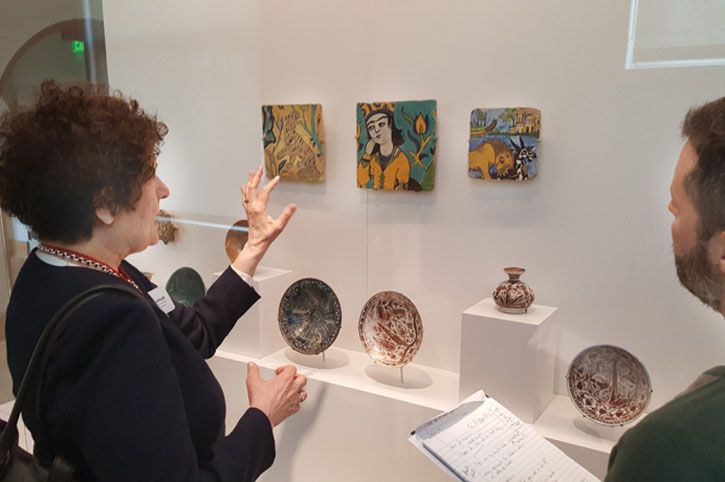
January 14, 2019
CAA NEWS TODAY MEMBER SPOTLIGHT: RENATA HOLOD
Posted by CAA - December 18, 2018
Renata Holod is College of Women Class of 1963 Term Professor in the Humanities, at the History of Art Department, and Curator, Near East Section, Museum of Archaeology and Anthropology, at the University of Pennsylvania. She has carried out archaeological and architectural fieldwork in Syria, Iran, Morocco, Turkey, Central Asia, Tunisia, and Ukraine, and is the author of numerous books and essays.
CAA media and content manager Joelle Te Paske corresponded recently with Professor Holod to learn more about what she’s working on.
Joelle Te Paske: Thank you for taking the time, Professor. So to begin, where are you from originally?
Renata Holod: I was born in Ukraine, and grew up in Edmonton, Alberta and then Toronto, Ontario, Canada.

I have a BA in Islamic Studies from the University of Toronto; a MA from University of Michigan in the History of Art, and my PhD from Harvard in Fine Arts.
JTP: What led you to the work you do now?
RH: My work on projects varies in date and methodology, from archaeology (I worked in Syria, and Tunisia), to architectural and regional history of different periods and locations (including fourteenth- to fifteenth-century architecture, settings and cities in greater Iran, and contemporary architecture from Morocco to Indonesia), to work on objects and collections (ceramics, the late Ottoman painter Osman Hamdi Bey). I get bored quickly.
JTP: You’ve been a CAA member for over 40 years. How has the field changed?
RH: There are many more practitioners in my particular field. In fact, it is no longer one field, but could be divided into regional and temporal sub-fields. There is much more theorization, and also expanded archival work (e.g. Ottoman archives), and now digital humanities, etc.
JTP: What is the most exciting part of your work currently?
RH: Studying unpublished objects, and redoing the galleries and publishing the Middle East collection for the later periods (Parthian through the nineteenth century) at the Penn Museum.
JTP: A favorite exhibition or study you’ve worked on over the years?
RH: Whichever one is currently being submitted.
JTP: What is your top recommendation for our readers?
RH: Network Theory and its application; see the work of my former student, Yael Rice on Mughal workshops, as well as the work of Johannes Preiser-Kappeler (Vienna).
JTP: What is a favorite memory from a CAA conference?
RH: Seeing my former students give papers; and meeting my former classmates.
JTP: Thank you, Professor Holod.
Renata Holod is College of Women Class of 1963 Term Professor in the Humanities, at the History of Art Department, and Curator, Near East Section, Museum of Archaeology and Anthropology, at the University of Pennsylvania. She has carried out archaeological and architectural fieldwork in Syria, Iran, Morocco, Turkey, Central Asia, Tunisia, and Ukraine. She is co-author of City in the Desert: Qasr al- Hayr East (1978); Architecture and Community: Building in the Islamic World Today (1983); The Mosque and the Modern World (1997); The City in the Islamic World (2008) and An Island Through Time: Jerba Studies (2009). She was recently part of the team redoing the Middle East galleries at the Penn Museum, with a special issue of Expedition magazine and a new handbook as well. Her most recent articles are: “Approaching the Mosque: Birth and Evolution” in The World of the Mosque: Magnificent Designs (New York: Rizzoli, 2017) 14-21, and “Jerba in the 3rd/9th century CE: Under Aghlabi Control?” in The Aghlabids & their Neighbors: Art & Material Culture in Ninth-Century North Africa, Glaire D. Anderson, Corisande Fenwick, and Mariam Rosser-Owen, eds. (Leiden: Brill, HdO series, 2017), 451- 469. On several international advisory and editorial boards, she has also served as President, Board of Trustees at The Ukrainian Museum in NYC, 2013-2017.
Click HERE for the article.

